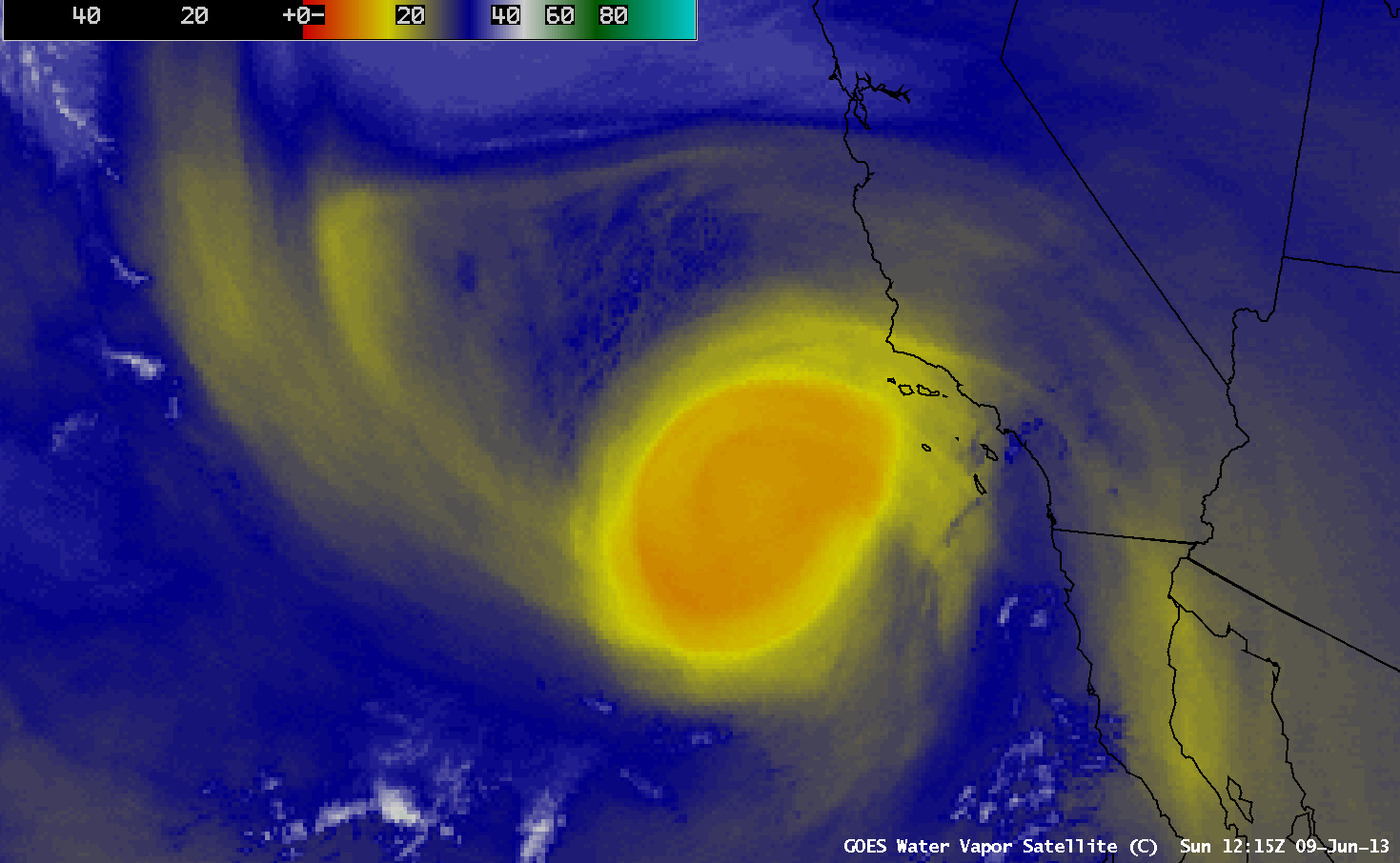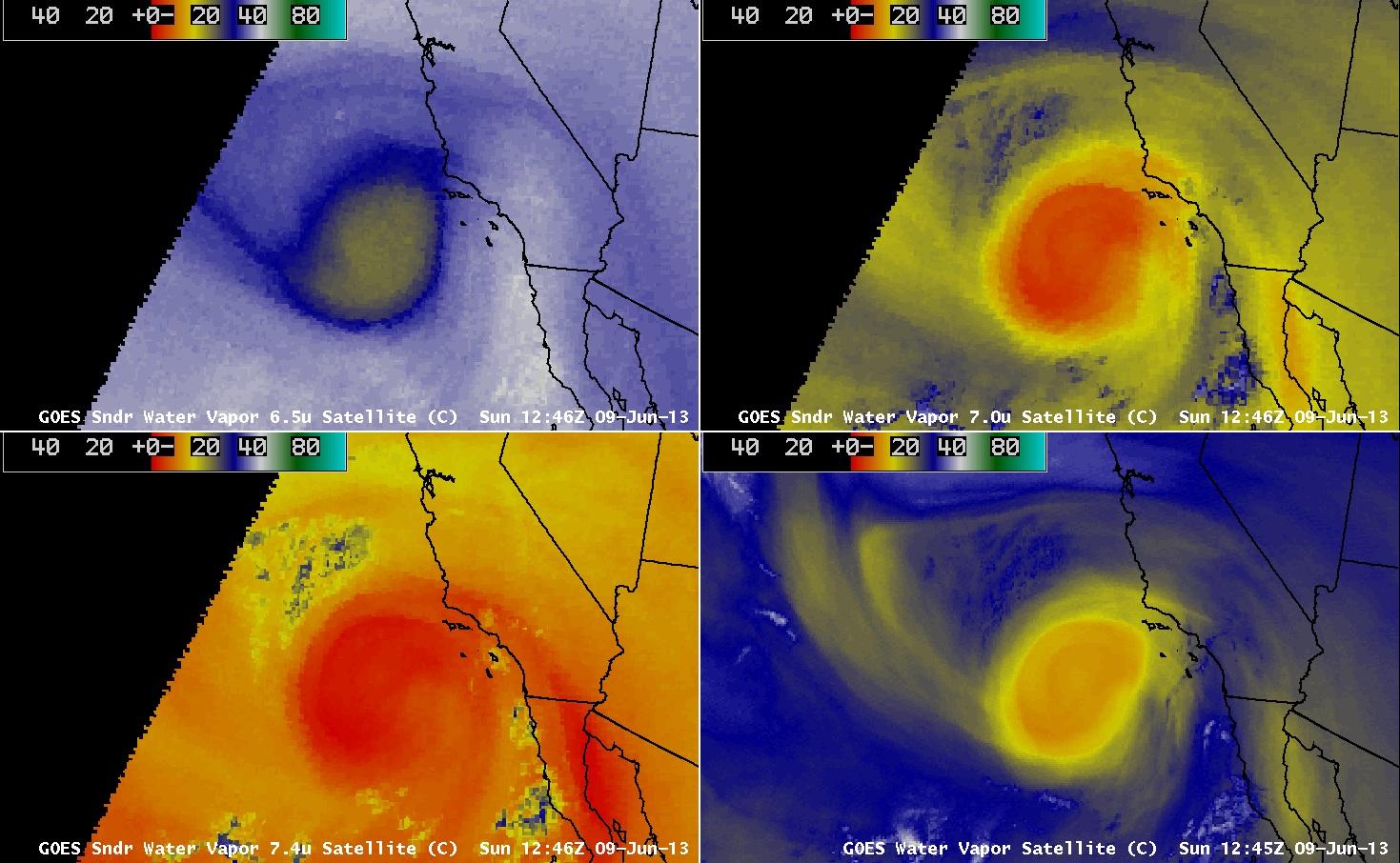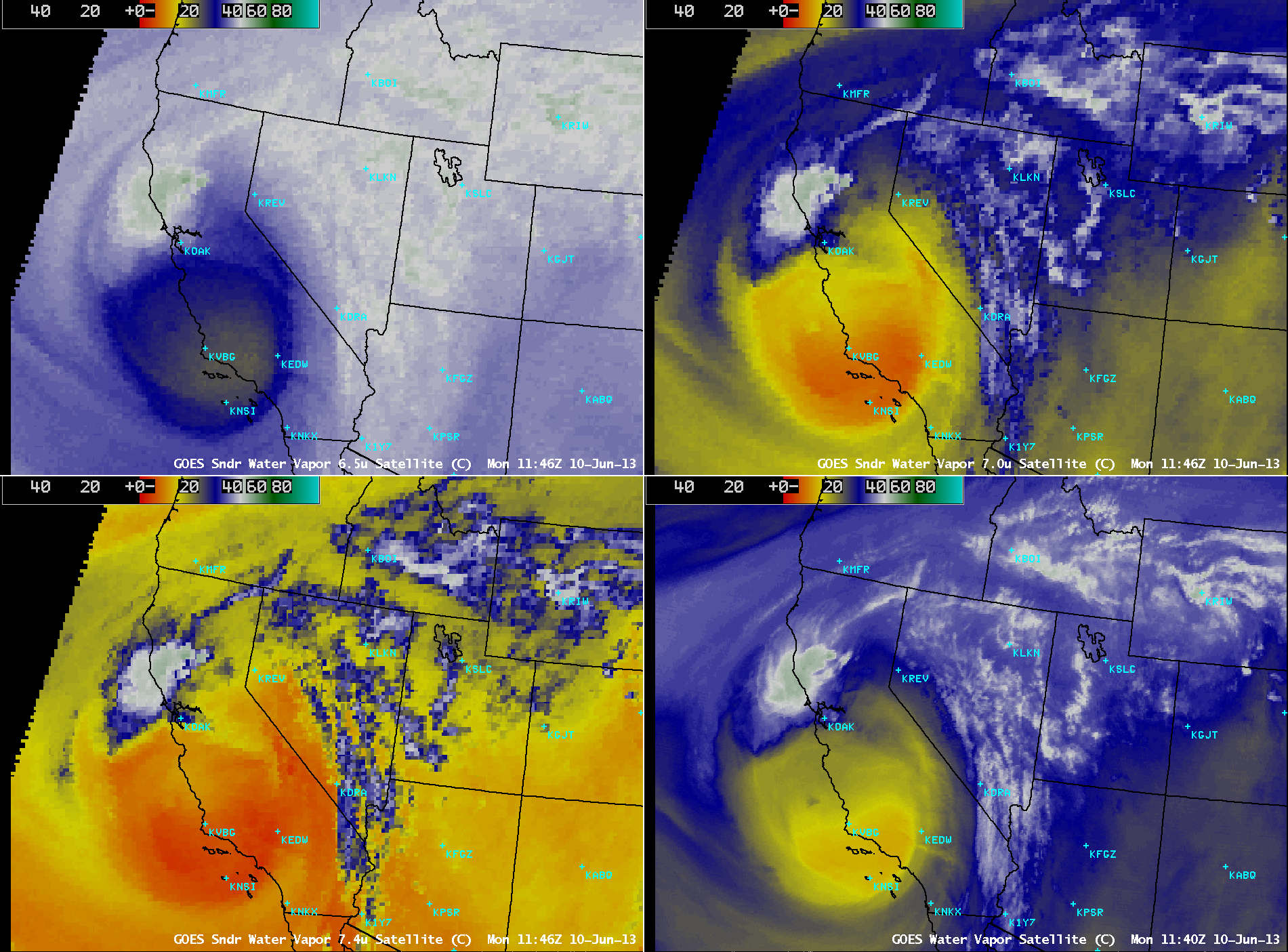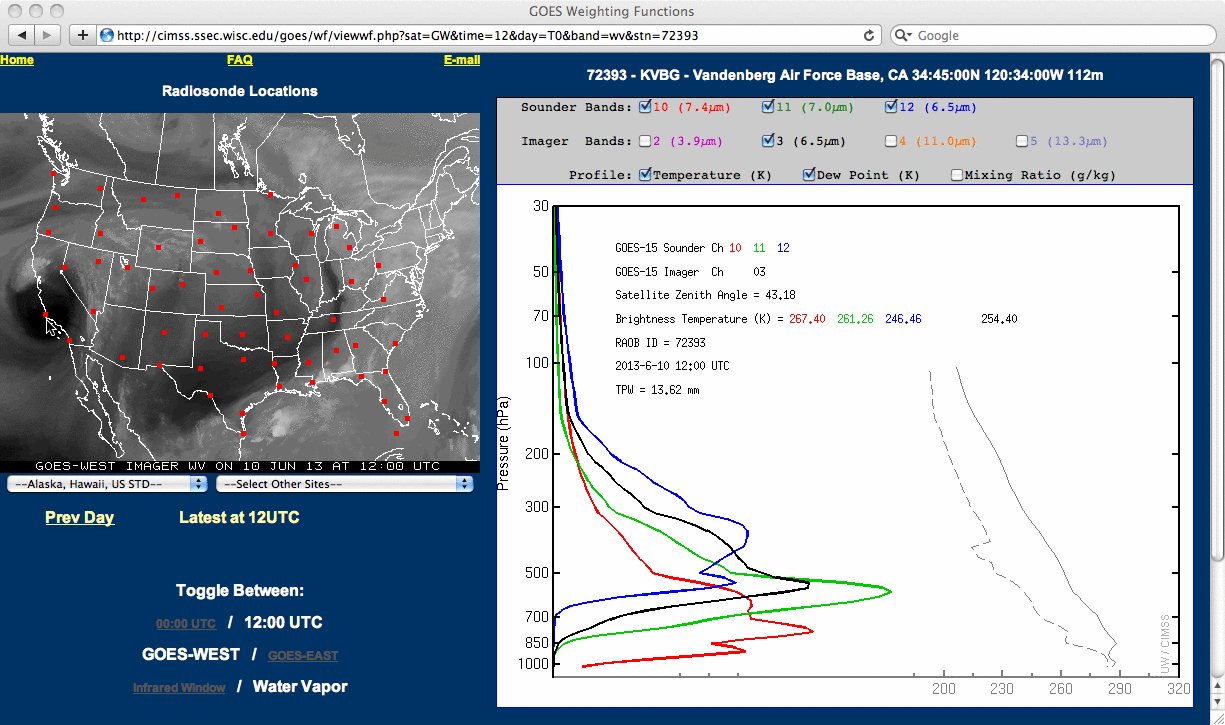Unusually dry cut-off low near the southern California coast
AWIPS images of GOES-15 6.5 µm water vapor channel data (above; click image to play animation) showed the formation of an unusually dry signature associated with a cut-off low near the coast of southern California during the 08 June – 09 June 2013 period. Water vapor channel brightness temperatures were as warm as -9.0º C (darker orange color enhancement), which is an abnormally warm/dry value to be seen on water vapor imagery.
This warm/dry signal was also very apparent on imagery from the 3 water vapor channels (6.5 µm, 7.0 µm, and 7.4 µm) that are available from the GOES-15 sounder (below; click image to play animation). These 3 GOES sounder water vapor channels sense the amount of mosture within 3 different vertical layers of the atmosphere, and are used to create the GOES sounder Total Precipitable Water (TPW) derived product — which in this case depicted TPW values as low as 11 mm or 0.43 inch at 18:00 UTC. The Blended Total Precipitable Water Percent of Normal product indicated that the TPW values within the dry cut-off low were generally 40-70% of normal for this time of year over that region.
The very warm/dry signature seen on the GOES-15 water vapor imagery was well-correlated with elevated values of GOES-15 sounder Total Column Ozone, which suggests an abnormally low tropopause within that feature. This was verified with fields from the CRAS model, which indicated that the height of the dynamic tropopause (taken to be the PV1.5 surface) was as low as the 570 hPa pressure level at 18:00 UTC. GOES sounder Total Column Ozone values were as high as 382 Dobson Units within the dry cut-off low.
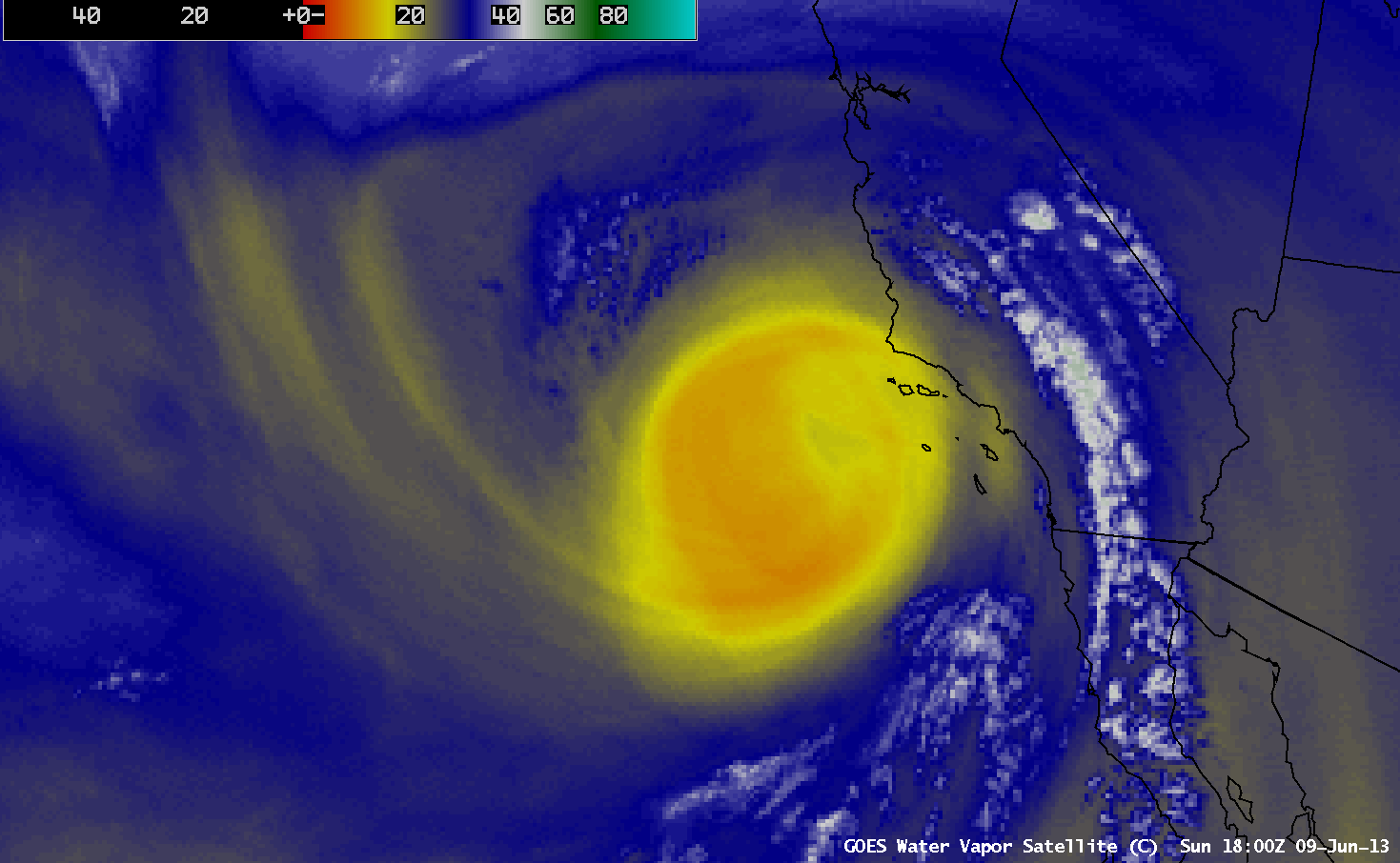
GOES-15 imager 6.5 µm water vapor channel image + GOES-15 sounder Total Column Ozone product (with overlays of CRAS model fields)
===== 10 June Update =====
The dry cut-off low began to move inland over southern California on 10 June, and an AWIPS image comparison of GOES-15 Sounder and Imager water vapor channel data (above) showed that it was centered approximately over Vandenberg Air Force Base (KVBG) at around 12 UTC that morning. A comparison of the GOES-15 Sounder and Imager water vapor channel weighting functions (below) indicated that the individual water vapor channels were sensing radiation from layers that were at much lower altitudes in the dry air mass over Vandenberg, California than they were farther to the north over Medford, Oregon (KMFR) where the atmosphere had much more moisture distributed within the middle to upper troposphere.


